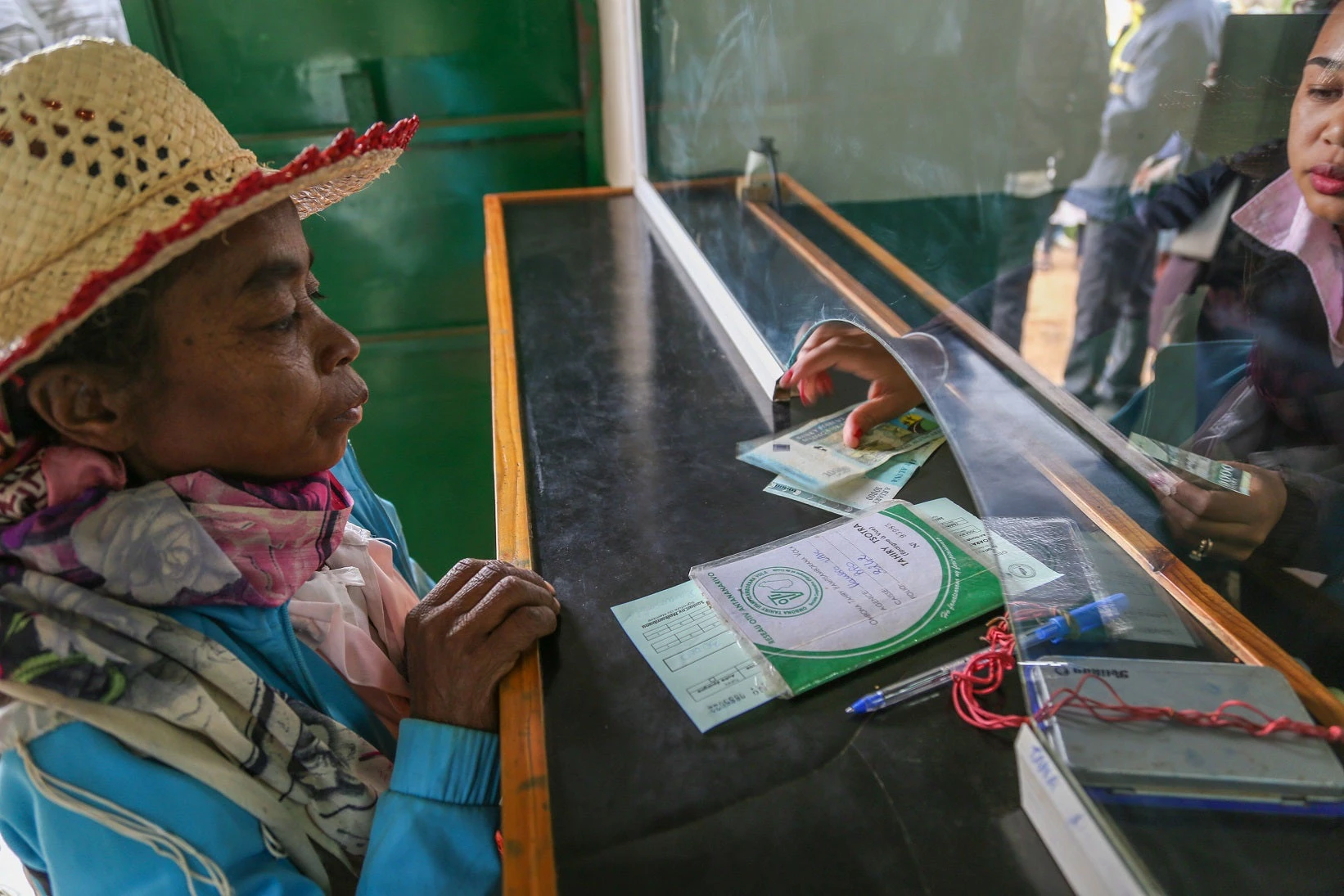 Cuando se inició la pandemia de COVID-19, los países de la AIF ya se encontraban altamente endeudados. Dado que se prevé que sus necesidades de financiamiento serán superiores al promedio a fines de 2021, estos países se enfrentan a algunas decisiones muy difíciles. Fotografía: © Mohammad Al-Arief/Banco Mundial.
Cuando se inició la pandemia de COVID-19, los países de la AIF ya se encontraban altamente endeudados. Dado que se prevé que sus necesidades de financiamiento serán superiores al promedio a fines de 2021, estos países se enfrentan a algunas decisiones muy difíciles. Fotografía: © Mohammad Al-Arief/Banco Mundial.
One year into the COVID-19 crisis, most of the world’s 74 poorest countries initially seem to have avoided the immediate large-scale outbreaks that have become the norm elsewhere. Among countries eligible to borrow from the World Bank’s International Development Association (IDA), the COVID-19 infection rate in January was 32 for every 100,000 people— 5 percent of the average for all emerging-market and developing economies.
The true impact of COVID-19 in the poorest countries
Yet that appearance could be misleading: Limited testing capacity might be hiding the true scale of the pandemic in these countries. Equally important, the economic toll of COVID-19 is graver than anything countries have endured in the 60 years since IDA was established—and digging out of the crisis will not be quick or easy.
In fact, the COVID-19 pandemic triggered an economic collapse: GDP per capita declined 3.5 percent in 2020, erasing three to four years of progress in poverty reduction. In one out of every five IDA countries, per-capita incomes are lower today than they were a decade ago—and the damage is even more severe for fragile and conflict-affected countries and small states. According to our latest estimates, the pandemic is expected to push between 55 and 63 million people in IDA countries into extreme poverty by the end of 2021.
High levels of debt mean difficult choices
IDA countries entered this crisis already hobbled with high debt levels. COVID-19 intensified the danger of debt distress in some of these countries: amid steep falls in government revenues and costly fiscal support measures undertaken by governments, government debt has climbed by 8 percentage points of GDP to 62 percent of GDP. In Sub-Saharan Africa, it is as high as 70 percent of GDP.
According to the International Monetary Fund, by the end of 2021, external financing needs in IDA countries are projected to be over $67 billion higher than the five-year historical average. That is no small figure, especially at a time when countries need as much fiscal cushioning as possible.
These large financing needs impose excruciating choices on IDA countries: Should they undertake the necessary spending to support vulnerable citizens and promote a durable recovery—even if it means risking a debt crisis? Or should they instead hunker down and simply forgo the spending—at enormous cost to human life and social stability?
No country should have to confront such a dilemma—which is why the World Bank has focused on ramping up financial resources for the poorest and most fragile countries on highly concessional or grant terms. IDA’s unprecedented support is part of the broader $160 billion World Bank Group response, currently being delivered over a 15-month period ending June 2021, and it includes $50-55 billion in grants and zero-interest and low-interest loans to help countries respond to the rapidly unfolding crisis.
COVID-19 is already a distinctly deep, synchronized and widespread shock
The shape of the economic recovery that is now coming into view offers little encouraging news: growth is likely to be subpar, for years to come. Analysis conducted for the World Bank’s latest Global Economic Prospects report suggests IDA countries will grow by a modest 2.6 percent this year, even if there is widespread vaccine distribution, a rebound in external demand, and a resumption of global tourism and business travel. Output will remain about 7 percent below where it might have been without the pandemic by the end of the year.
Recessions usually leave scars. Countries that suffer recessions often see their long-term growth expectations decline, on average, by 1.5 percentage points in the five years after the recession. That is because recessions lower investment flows, disrupt supply-chain linkages, impact health and livelihoods, and erode human capital, pushing people back into extreme poverty.
The COVID-19 crisis, however, stands in a category of its own: no crisis since World War II has had global economic effects as broad and deep. The high unemployment, lost schooling, and degraded health outcomes stemming from the pandemic have disproportionately affected women, children, and other vulnerable segments of the population. Not surprisingly, countries with the means to do so undertook unprecedented fiscal-stimulus efforts last year, but for many of the poorest countries that could not afford this, IDA was a lifeline. Amid such an unprecedented crisis, it is time to mobilize additional financing for these countries.
Support for IDA countries is support for everyone
Nearly 70 years ago, global leaders had the foresight to recognize the “inextricably forged” chain of interdependence between developed and developing nations of the world. Within a decade, their ideas led to the establishment of IDA. By 2019, the world had come within reach of eliminating extreme poverty for the first time in human history.
In the aftermath of COVID-19, it will be especially important to make the most of global interdependence. The arrival of prosperity in the poorest countries can help ensure its durability everywhere else. Let us ensure IDA has the resources necessary to continue to help countries protect hard-won gains and avoid lasting economic scars in the crucial years ahead. The time to act is now.
The blog is part of a series on ways to ensure a resilient recovery from COVID-19 in the world’s poorest countries. For the latest, follow @WBG_IDA and #IDAWorks.
RELATED
The World Bank Group’s Response to the COVID-19 (coronavirus) Pandemic



Join the Conversation